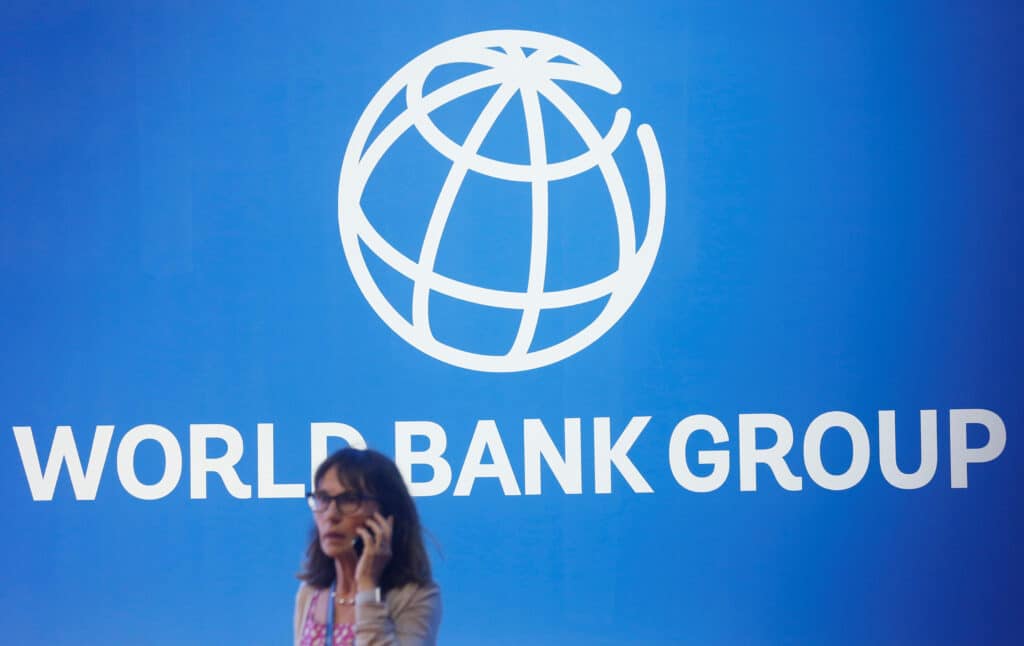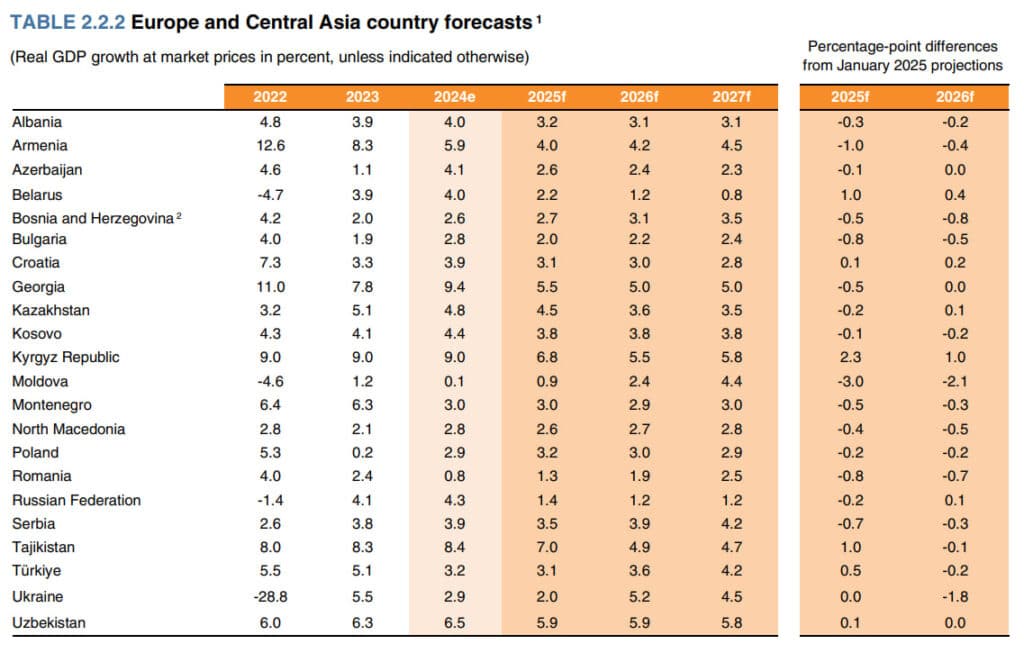Central Asia Faces Slower Growth Amid Global Uncertainty

The Central Asian region continues to experience uneven but generally moderate economic growth, according to the World Bank’s Global Economic Prospects report released in June 2025. Countries such as Kazakhstan, Uzbekistan, Kyrgyz Republic and Tajikistan face a combination of weakening external demand, tighter global financial conditions and increasing climate risks.
Kazakhstan
Kazakhstan’s economic expansion is forecast to slow from 4.8% in 2024 to 4.5% in 2025 and further to 3.5% in 2026. The country continues to face weaker external demand, particularly from the euro area and China, which affects commodity exports. As a major energy exporter, Kazakhstan is also vulnerable to fluctuations in global commodity prices and trade policy shifts.
Additional risks stem from the impact of climate change. Flooding linked to extreme weather could reduce Kazakhstan’s GDP by 1.3% by 2060 if adaptive measures are not taken
Uzbekistan

Uzbekistan is expected to maintain relatively strong growth, with GDP increasing by 5.9% in 2025 and 5.8% in 2026. While this remains one of the higher growth rates in Central Asia, the pace is forecast to moderate slightly due to tightening global conditions and trade headwinds.
Inflation remains above target, which limits the central bank’s flexibility for monetary easing. Uzbekistan, as an energy importer, may benefit modestly from lower global commodity prices, although rising input costs could weigh on production and investment
Kyrgyz Republic
The Kyrgyz Republic posted a rapid 9% growth rate in 2023 and 2024, but this is projected to decelerate to 6.8% in 2025 and 5.8% in 2026. The anticipated slowdown reflects the fading effects of post-pandemic recovery and tighter global financial conditions.
Nonetheless, the country’s integration into regional trade networks and development in services and light industry offer some growth support. Inflationary pressures and financial vulnerabilities remain a concern, particularly given the country’s exposure to commodity and remittance fluctuations.
Tajikistan
Tajikistan is projected to grow by 7.0% in 2025 before moderating to 4.7% in 2026. The country has been among the fastest-growing economies in the region but remains sensitive to changes in demand for metals, especially from China, as well as to climate-related risks.
Without adaptation measures, climate change could reduce Tajikistan’s GDP by up to 6% by 2050. The economy’s reliance on remittances and extractive industries makes it particularly vulnerable to external shocks.
Kursiv also reports that Uzbekistan has been highlighted in the Sustainable Development Report 2025 as one of the countries that has advanced more rapidly than many of its peers in implementing the SDGs.

